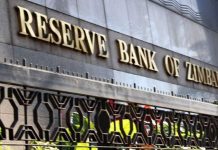Tadiwa Musiyiwa
Crisis outcomes are expected to persist in most typical deficit-producing areas through March due to non-availability of own-produced food stocks, reductions in agricultural labour opportunities and income, and limited access to food and other commodities on the market, Famine Early Warning System Network (Fews Net) has said.
This comes after the country had a great harvest in the previous season with above normal rains recorded while the 2021/22 rainfall season has been characterised by erratic rainfall across most parts of the country which is likely to result in below-average harvests by April or May.
In typical surplus-producing areas, minimal outcomes will be limited, while stressed outcomes will be widespread. Meanwhile, typical deficit-producing areas are expected to be mainly stressed as households will only be able to meet their minimal food needs but not their non-food needs. Some critical areas in parts of Manicaland, Masvingo, Midlands, and the Matabeleland Provinces are expected to deteriorate to crisis by July, signalling an early start to the next lean season.
According to Fews Net’s outlook report for February to September 2022,although the passage of Tropical Storm Ana in January helped to reduce rainfall deficits in parts of the country, it caused water logging and leaching, and resulted in the loss of some crops, livestock, and property. Soil moistures have once again been significantly reduced across the country due to a widespread and extended dry season that began in early February. The poor start of the 2021/22 rainfall season also contributed to reduced cultivated acreage for main staple crops.
The organisation reported that the second half of the rainy season is forecast to be below average across southern Zimbabwe, and average in the rest of the country. Crop output is expected to be below average, due to below-average cropped areas, a persistent February dry spell, and anticipated below-average production, particularly in traditional surplus-producing areas of the country.
Official national cropped area estimates are slightly below average, with 1.56 million hectares reportedly planted to maize as of the end of January. However, there is significantly below average cropped area in some areas, brought about by dry spells, very late planting, and poor germination. Currently, crop stages for maize and small grains range from the vegetative to reproductive stages. However, crop condition in most areas is deteriorating rapidly as most crops are showing signs of nitrogen deficiency due to water logging and leaching from heavy rains in January and due to recent shortages and access constraints due to above-average prices of top-dressing fertiliser.
Between December and January, top-dressing fertiliser prices surged by 40 to 75% in both United States dollar and Zimbabwean dollar terms, due to a more than doubling in ammonia prices as a result of natural gas shortages on global markets. Furthermore, the February dry spell has caused crop moisture stress in numerous locations, with some households in the Eastern and Southern parts facing near-total crop write-offs.
“Following a period of extended dryness in February, most crops are suffering significant moisture stress and near complete write-offs are likely for some households in worst-affected areas. The government has now lifted the maize and wheat import bans and is allowing the milling industry and stock feed manufacturers to import grain.”
Throughout the outlook period, most livelihood strategies are expected to be below normal levels owing to a weak agricultural season and a volatile macroeconomic environment. The cost of living is expected to continue rising, especially as parallel market exchange rates result in above normal price increases of goods and services. Ongoing ZWL cash shortages will likely continue to erode purchasing power as mobile and electronic money transfers are charged premium rates.
Furthermore, above-average national cereal carryover stocks from the 2021 harvests are likely to reduce the national annual cereal deficit for the 2022/23 marketing year. However, below-average national production is projected to precipitate an early start to the lean season, as early as July in areas worst affected by dry spells and crop loss. Cereal availability at household level in both surplus- and deficit-producing areas is expected to only marginally improve beginning in April with the 2022 harvests.
National maize meal supply is likely to remain near-average throughout the outlook period with supplies mainly available through formal supermarkets and retail shops rather than in open markets.
“Demand for maize meal is expected at near-normal levels, especially in surplus-producing areas, and will be relatively higher in typical deficit-producing areas” read the report.
Poor macroeconomic conditions are expected throughout the outlook period with continued inflationary pressures and increases in the cost of living. Official exchange rates are likely to see stable increases throughout the projection period. Meanwhile, parallel market exchange rates are expected to remain the main driver of price increases in Zim dollars and are likely to remain more than double the official exchange rates during the outlook period. Other anticipated price drivers include high fuel, transportation, and energy costs.









